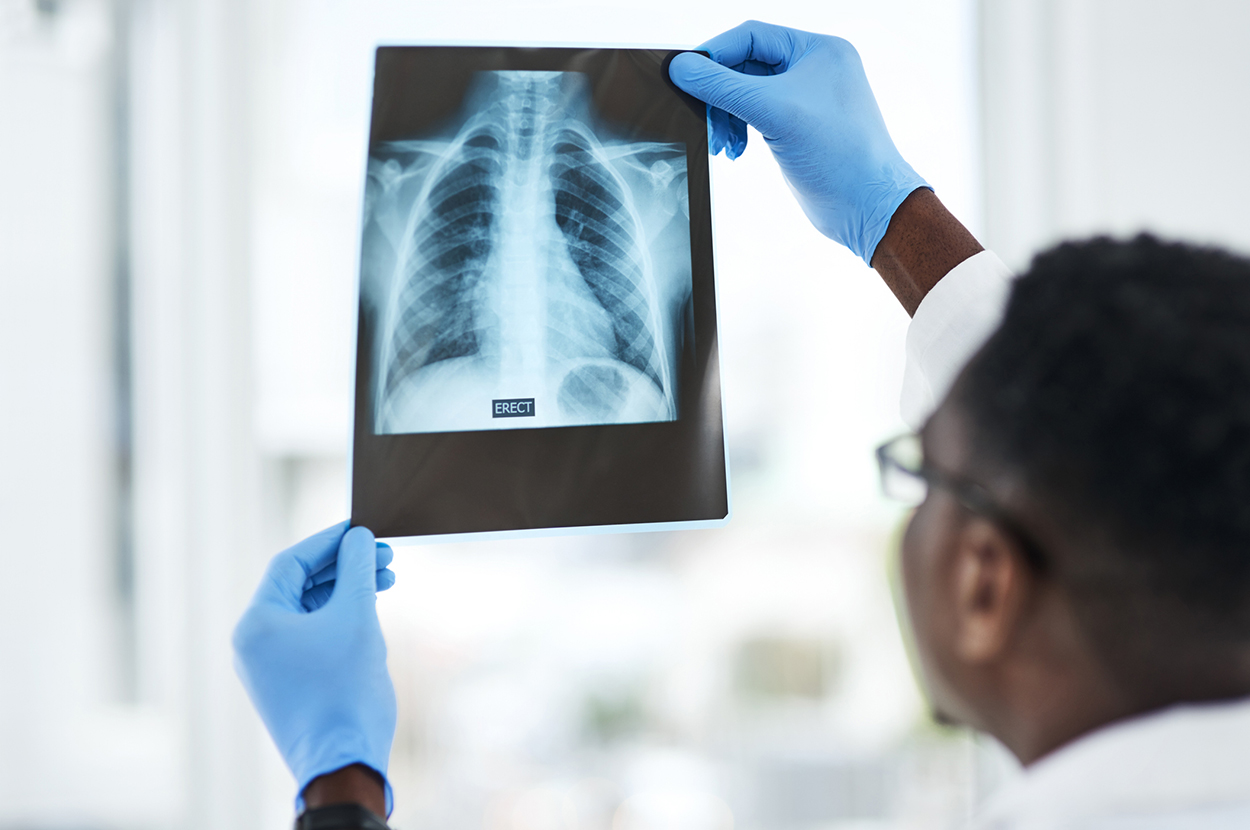X-rays are a type of electromagnetic radiation that is used to visualize an image of the body for medicinal purposes. X-rays pass through the body and are absorbed in different ways. This absorption creates a picture of the body that medical providers can look at to diagnose common medical conditions.
What is an x-ray?
An X-ray is a widely used imaging test used by medical providers to look inside the body without making an incision. X-rays are used for diagnostic purposes in various diseases or to confirm the diagnosis.
After diagnosis and treatment, X-rays can be used to evaluate the recovery process and make decisions about further treatment.
Parts of an x-ray
An X-ray consists of a black and white image of the inside of your body. To achieve this, electromagnetic waves are aimed at the body and are then absorbed by the muscles, tissues, and bone, at different rates. On the other side of the body, the rays that get through produce the image we know as an X-ray. The different absorptions of radiation create an image of different shades of black and white on X-ray film.
Calcium in bones absorbs x-rays the most, so bones look white. Fat and other soft tissues absorb less and look grey. Air absorbs the least, so lungs look black. With an X-ray, medical providers have a graphic representation of the healthy and diseased parts of the body. This image can be used to provide rapid diagnosis and treatment of common medical issues.
Procedure
X-rays are produced when charged particles of sufficient energy hit any material. The area of the body that needs to be visualized by X-ray is exposed to this radiation.
The X-ray machine containing the X-rays is put at that part of the body and the X-ray film is placed at the other side so the radiation will first strike the body tissues and bones and then go to the X-ray film forming an image.
The image formed depends on the radiological density of the muscles and other tissues, and the atomic number of the materials being imaged.
Types
Due to the extensive imaging advantages of X-rays in the health field, many researchers have established different types of X-rays exams:
- Radiography: it is the most widely used imaging technique for bones, teeth, tumors, effusion, etc. This is what we typically think of as an X-ray
- Fluoroscopy: A dye that shows up on Xray is injected into an area of concern. A radiologist is then able to see where the dye goes, or what it highlights, depending on the situation. A typical use of this is watching gut activity using barium dye.
- Interventional radiology: A combination of still X-rays, live X-rays and dye are used to perform procedures inside the body through small holes in arteries or veins.
Associated risks
X-rays can cause mutations in the DNA and are also considered as carcinogenic. Extensive exposure to radiation increases the risk of getting cancers. Exposure to high radiation levels can have a range of effects, such as causing vomiting, bleeding, fainting, hair loss, and even loss of skin. Medical providers, or other people who work around X-ray devices, will usually wear protective gear to reduce their ongoing exposure to radiation.
For an average patient receiving an X-ray, though, they provide such a low dose of radiation that they are not believed to cause any immediate health problems.
If a patient has had prior exposure to excessive radiation or if that patient has any Implants, they should inform a medical provider prior to receiving an X-Ray.
Contact us
In case of urgent medical care assistance, AfterOurs Urgent Care offers immediate telemedicine services, where medical providers are available to offer assistance. Anyone who experiences signs and symptoms requiring urgent medical attention can simply book their appointment with AfterOurs Urgent Care to directly talk to an expert. If your medical issue is not appropriate for telemedicine, we will let you know and refer you to an in-person facility.
When to visit a doctor:
If you experience swelling on the lining of the mouth, lips, or nose, then you should seek immediate medical assistance.
For more information on X-rays, see the following website:

